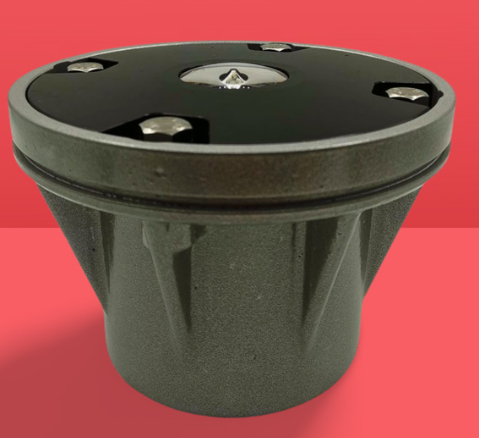Guiding the Descent: The Precision Engineering of Helipad Landing Lights
In the critical final moments of a helicopter flight, precise visual guidance is not a luxury—it is an absolute necessity for safe touchdown. This guidance is provided by a specialized and meticulously engineered system: helipad landing lights. Far more than simple illumination, these lights form a critical visual language that communicates essential information to pilots, enabling safe operations in environments ranging from hospital rooftops to offshore platforms and remote emergency sites. This article explores the technology, standards, and strategic importance of these vital safety systems.
The Critical Function Beyond Illumination
The primary role of helipad landing lights is to define the landing area clearly and unambiguously, providing pilots with vital spatial orientation during approach, hover, and landing. In low-light conditions, adverse weather, or over featureless terrain, these lights become the pilot's primary reference point. They mitigate the risks of spatial disorientation, hard landings, and dynamic rollover by explicitly marking the touchdown and lift-off area (TLOF) and its surrounding safety perimeter. Their design is a direct contributor to operational safety, enabling missions to proceed day or night.
Decoding the Visual Language: Configuration and Standards
The arrangement and type of helipad landing lights are not arbitrary; they are governed by strict international standards from bodies like the International Civil Aviation Organization (ICAO) and the Federal Aviation Administration (FAA). This standardized "language" ensures universal recognition by pilots worldwide.

A typical system includes:
Perimeter Lights: These white lights outline the shape (typically a circle, square, or rectangle) of the TLOF. They provide the fundamental visual definition of the landing area.
| helipad landing lights |
Flush Mounting: To avoid creating a physical hazard on the deck, these lights are designed to be mounted flush with the surface, capable of withstanding the weight and downwash forces of a helicopter.
Identification and Approach Indicators: Many helipads, especially hospital or elevated ones, incorporate a prominent "H" marker, often illuminated. Additionally, aiming or approach lights may be installed to guide the correct flight path toward the deck.
Wind Direction Indicators: While not a light themselves, a lighted wind cone or tetrahedron is an integral part of the system, informing the pilot of current wind conditions for a safe approach.
| helipad landing light |
Engineering for Extreme Environments
The effectiveness of helipad landing lights hinges on their ability to perform reliably in some of the most demanding conditions imaginable.
Durability and Resilience: These fixtures must be exceptionally robust. They are subjected to immense stress, including the extreme downwash force from rotor blades, constant vibration, exposure to aviation fuels and chemicals, and significant temperature variations. Housing is typically constructed from heavy-duty, corrosion-resistant materials like stainless steel or engineered polymers.
Ingress Protection (IP Rating): A high IP rating (e.g., IP67) is mandatory to ensure the internal electronics are completely sealed against water, dust, and debris, whether from rain, sea spray on an offshore rig, or blowing snow.
Intensity Control: To prevent blinding the pilot (glare) while ensuring high visibility, many modern systems offer adjustable intensity settings. Lights can be dimmed for night operations in urban settings or set to maximum brightness for use in fog or bright daylight.
The Technological Shift: LEDs and Advanced Systems
The technology behind helipad landing lights has undergone a significant revolution with the adoption of Light Emitting Diodes (LEDs).
LED Advantages: LEDs have become the undisputed standard due to their long lifespan, low energy consumption, and exceptional resistance to shock and vibration. Their rapid switch-on time and reliability are critical for safety systems. This longevity drastically reduces maintenance needs, a crucial factor for hard-to-access helipads.
| helipad landing lights |
Integrated Control and Monitoring: Modern systems go beyond simple lighting. They can be integrated into a centralized control panel, allowing operators to remotely monitor bulb status, control intensity, and receive immediate alerts for any failures. This proactive approach to maintenance ensures continuous operational readiness.
The Indispensable Role in Operational Safety
Installing a certified and properly configured helipad landing lights system is a fundamental component of risk management. It is a direct investment in:
Pilot Safety: Providing clear, unambiguous visual cues that reduce pilot workload and enhance decision-making during critical flight phases.
24/7 Operational Capability: Enabling landing operations to continue safely after dark or in poor visibility, which is especially critical for Emergency Medical Services (EMS) and search-and-rescue missions.
Regulatory Compliance: Meeting the stringent requirements set by aviation authorities is essential for licensing and insurance, and mitigates liability.
Helipad landing lights represent a sophisticated fusion of optical engineering, materials science, and regulatory compliance. They are a silent yet indispensable partner in aviation safety, transforming a mere landing pad into a clearly defined, secure, and reliable destination. As helicopter operations continue to expand in urban mobility and emergency services, the precision and reliability of these guiding lights will remain a cornerstone of safe flight operations worldwide.
